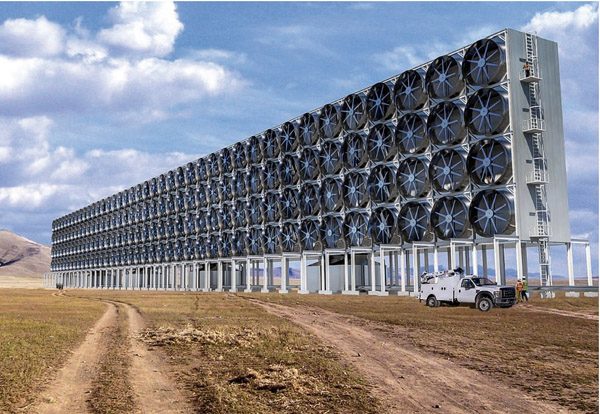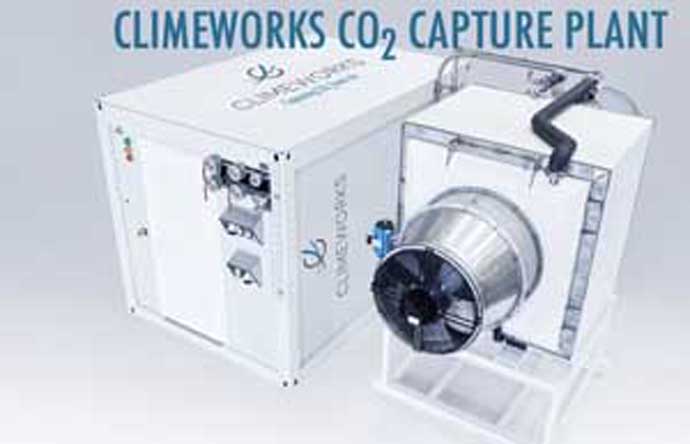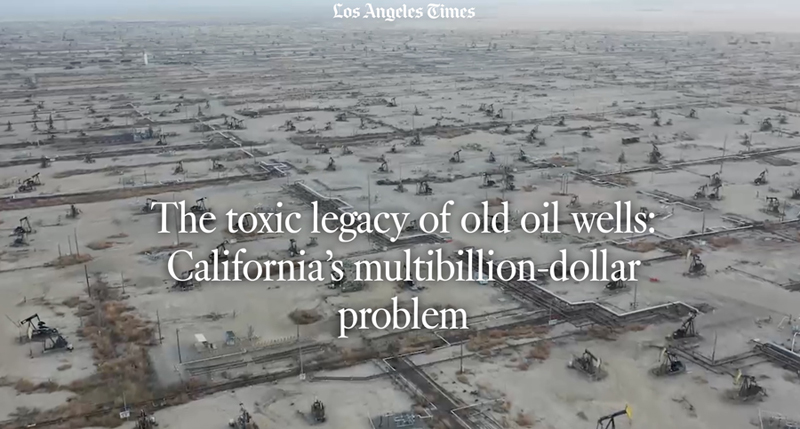A. Direct Carbon Capture
1. On Land
Despite resistance by many environmental groups (1) there is a growing consensus among climate scientists (2) that efforts to reduce global warming by decreasing the use of fossil fuels is failing. In fact, despite the promises of the Climate Accords, the amount of CO2 in the atmosphere continues to increase. This has resulted in a dramatic increase interest in Direct Carbon Capture and other approaches. In response to the criticisms, the use of direct carbon capture should not affect the efforts to reduce emissions. All viable approaches should used.

Carbon Engineering (CE)
Carbon dioxide (CO2) can be sucked out of the atmosphere for less than $100 per ton, a price tag less than one-sixth the cost of previous estimates for the geo-engineering technique known as direct air capture, scientists report in the journal Joule. David Keith, a physicist at Harvard University and co-founder of the startup Carbon Engineering, and his colleagues analyzed the output of a pilot plant in British Columbia in Canada that uses a four-step chemical process to capture CO2. A liquid takes in the gas initially, then releases it as a concentrated stream of gas that the plant combines with hydrogen to make gasoline and other fuels. Keith’s team projected that a large commercial plant using similar technology could capture CO2 for between $94 and $232 per ton. At that price, Carbon Engineering claims fuels could be made for about $1 per liter. Fuels based on carbon removal could be cost-effective in regions such as California where regulations allow them to command a premium price, says Stephen Pacala, an ecologist at Princeton University whois leading a study about CO2 removal technologies for the National Academies of Sciences, Engineering, and Medicine.
CE’s AIR TO FUELS™ technology provides a tool to significantly reduce the carbon footprint of the transportation sector by recycling atmospheric CO₂ into liquid fuel and displacing crude oil. It gives an ability to harness low-carbon electricity such as solar PV, and material inputs of water and air, to generate fuels that are drop-in compatible with today’s infrastructure and engines.
This technology has several intrinsic advantages to offer in eliminating fossil carbon dioxide emissions from the transportation sector.
• It can use carbon-free renewable power such as wind and solar at the best sites, and can accommodate the intermittent nature of this power source to continuously produce high value transportation fuels.
• It can produce fuels with 100x less land use footprint and less water use than biofuels, and thus doesn’t suffer the fundamental limits to scaling associated with biofuels.
• The fuels produced can be blended with traditional fossil fuels to allow progressive emissions reductions by gradual fuel switching, with no blending limit.
• CE’s fuels are drop-in compatible with today’s infrastructure and engines so do not require infrastructure turn-over, and consumers can maintain their current transportation habits, while at the same time reducing their environmental impact.
• CE’s engineering work shows that AIR TO FUELS™ technology can produce fuels for less than $1.00 /L once scaled up, making them cost competitive with bio-diesels. While currently more expensive than the production cost of fossil fuels, Low Carbon Fuel Standard regulations add to their competitive advantage, and allow market viability in leading jurisdictions today.
• The AIR TO FUELS™ process can deliver fuels that have an ultra-low life-cycle carbon intensity, or that are fully carbon neutral (depending on the energy source used to power the DAC component of the process).
• CE’s fuels are cleaner burning than fossil fuels, with no sulfur and low particulates, meaning they not only reduce GHG emissions, but reduce air pollution too.
CE is actively seeking strategic partners to build full-scale commercial AIR TO FUELS™ facilities, and customers interested in supply agreements for our ultra-low carbon fuel.
Climeworks

Climeworks is a Swiss company. Their plants capture atmospheric carbon with a filter made of porous granulates modified with amines, which bind the CO2 in conjunction with the moisture in the air. This bond is dissolved at temperatures of 100 °C. The CO2 is then released from the filter and collected as concentrated CO2 gas. CO2-free air is released back into the atmosphere. This continuous cycle is then ready to start again. The filter is reused many times and lasts for several thousand cycles.
This technology can be combined with that of Carbon Engineering to produce CO2 which is then converted to fuel.
Global Thermostat is a U.S. Company. They state they can extract CO2 for less than $100/ton. They utilize adsorbent amine wafers that are thinner than those used by Carbon Engineering and thus requires less pressure and energy to push air through them. They list an impressive number of uses for the CO2.
Center for Negative Carbon Emissions
Klaus Lackner has been the pioneer driving force behind the development of techniques to remove CO2 form the air. His center is currently researching a
series of anion exchange resin polymer strips designed to remove CO2 from air passively flowing air.
Verdox A company set up by scientists at MIT to utilize a new CC method.
The technique, based on passing air through a stack of charged electrochemical plates, The device is essentially a large, specialized battery that absorbs carbon dioxide from the air (or other gas stream) passing over its electrodes as it is being charged up, and then releases the gas as it is being discharged. In operation, the device would simply alternate between charging and discharging, with fresh air or feed gas being blown through the system during the charging cycle, and then the pure, concentrated carbon dioxide being blown out during the discharging.
As the battery charges, an electrochemical reaction takes place at the surface of each of a stack of electrodes. These are coated with a compound called polyanthraquinone, which is composited with carbon nanotubes. It is considerably more efficient than other CC methods.
The above approaches have the strong advantage that they solve the problem of what to do with the millions of tons of CO2 removed from the atmosphere. It can be converted to non-fossil fuel replacing fossil based fuels. This would reduce the need to replace all internal combustion cars with electric cars and the issue of where does that electricity for those comes from? This can be supplemented with removal of CO2 with storage in the form of useful products and reducing ocean acidity
Where to put the CO2?
One possible solution to this question is shown in the following photo of unused, extinct oil well in the region of Bakersfield, CA. This would provide thousands of already drilled holes for storing captured CO2.

(1) See the Green New Deal letter to Congress January 19, 2019.
(2) IPCC 2018 Special Report Summary for Policy Makers.
2. In the Ocean
The oceans cover 71 percent of the earth's surface and the CO2 content in the ocean is 50 times that in the atmosphere and 20 times that in the soil (1). Approximately 30 percent of C02 produced by burning fossil fuels is adsorbed by the oceans (2). The critical role of phytoplankton in the CO2 cycle was discussed in the Global Warming is Real, section of this web site.
Two companies, SeaQuestration and Ocean Based Climate Solutions use different technologies to enhance the growth of phytoplankton and other organisms to increase the capture of CO2. Since the captured CO2 is in the ocean this decreases atmospheric CO2, decreases ocean acidification and eventually decreases ocean and atmospheric warming. Since the oceans are so vast these approaches have the potential to remove huge quantities of CO2 from the atmosphere. Two phytoplanktons, diatoms and coccolithophorids play a major role because after they adsorb C02 they sink to the bottom of the ocean, effectively removing the C02. Thus, one additional option would be to grow large amounts of these phytoplanktons and dump them in selected parts of the ocean (3).
(1) Homen, K. The Global Carbon Cycle International Geophysics 72:282-321, 2000.
(2) La Quere, C et al Global Carbon Budget. Earth System Science Data 6:235-263, 2013.
(3) MicroBio Engineering, Inc. a California based company with expertise in growing phytoplankton could help.


